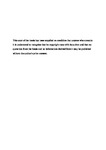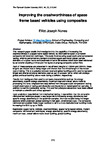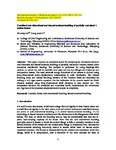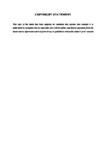Fire performance of cold-formed steel sections
| dc.contributor.supervisor | Li, Long-yuan | |
| dc.contributor.author | Cheng, Shanshan | |
| dc.contributor.other | Faculty of Science and Engineering | en_US |
| dc.date.accessioned | 2015-04-21T14:31:56Z | |
| dc.date.available | 2015-04-21T14:31:56Z | |
| dc.date.issued | 2015 | |
| dc.date.issued | 2015 | |
| dc.identifier | 10388659 | en_US |
| dc.identifier.uri | http://hdl.handle.net/10026.1/3316 | |
| dc.description.abstract |
Thin-walled cold-formed steel (CFS) has exhibited inherent structural and architectural advantages over other constructional materials, for example, high strength-to-weight ratio, ease of fabrication, economy in transportation and the flexibility of sectional profiles, which make CFS ideal for modern residential and industrial buildings. They have been increasingly used as purlins as the intermediate members in a roof system, or load-bearing components in low- and mid-rise buildings. However, using CFS members in building structures has been facing challenges due to the lack of knowledge to the fire performance of CFS at elevated temperatures and the lack of fire design guidelines. Among all available design specifications of CFS, EN1993-1-2 is the only one which provided design guidelines for CFS at elevated temperatures, which, however, is based on the same theory and material properties of hot-rolled steel. Since the material properties of CFS are found to be considerably different from those of hot-rolled steel, the applicability of hot-rolled steel design guidelines into CFS needs to be verified. Besides, the effect of non-uniform temperature distribution on the failure of CFS members is not properly addressed in literature and has not been specified in the existing design guidelines. Therefore, a better understanding of fire performance of CFS members is of great significance to further explore the potential application of CFS. Since CFS members are always with thin thickness (normally from 0.9 to 8 mm), open cross-section, and great flexural rigidity about one axis at the expense of low flexural rigidity about a perpendicular axis, the members are usually susceptible to various buckling modes which often govern the ultimate failure of CFS members. When CFS members are exposed to a fire, not only the reduced mechanical properties will influence the buckling capacity of CFS members, but also the thermal strains which can lead additional stresses in loaded members. The buckling behaviour of the member can be analysed based on uniformly reduced material properties when the member is unprotected or uniformly protected surrounded by a fire that the temperature distribution within the member is uniform. However if the temperature distribution in a member is not uniform, which usually happens in walls and/or roof panels when CFS members are protected by plaster boards and exposed to fire on one side, the analysis of the member becomes very complicated since the mechanical properties such as Young’s modulus and yield strength and thermal strains vary within the member. This project has the aim of providing better understanding of the buckling performance of CFS channel members under non-uniform temperatures. The primary objective is to investigate the fire performance of plasterboard protected CFS members exposed to fire on one side, in the aspects of pre-buckling stress distribution, elastic buckling behaviour and nonlinear failure models. Heat transfer analyses of one-side protected CFS members have been conducted firstly to investigate the temperature distributions within the cross-section, which have been applied to the analytical study for the prediction of flexural buckling loads of CFS columns at elevated temperatures. A simplified numerical method based on the second order elastic – plastic analysis has also been proposed for the calculation of the flexural buckling load of CFS columns under non-uniform temperature distributions. The effects of temperature distributions and stress-strain relationships on the flexure buckling of CFS columns are discussed. Afterwards a modified finite strip method combined with the classical Fourier series solutions have been presented to investigate the elastic buckling behaviour of CFS members at elevated temperatures, in which the effects of temperatures on both strain and mechanical properties have been considered. The variations of the elastic buckling loads/moments, buckling modes and slenderness of CFS columns/beams with increasing temperatures have been examined. The finite element method is also used to carry out the failure analysis of one-side protected beams at elevated temperatures. The effects of geometric imperfection, stress-strain relationships and temperature distributions on the ultimate moment capacities of CFS beams under uniform and non-uniform temperature distributions are examined. At the end the direct strength method based design methods have been discussed and corresponding recommendations for the designing of CFS beams at elevated temperatures are presented. This thesis has contributed to improve the knowledge of the buckling and failure behaviour of CFS members at elevated temperatures, and the essential data provided in the numerical studies has laid the foundation for further design-oriented studies. | en_US |
| dc.description.sponsorship | School of Marine Science and Engineering, Plymouth University; China Scholarship Council | en_US |
| dc.language.iso | en | en_US |
| dc.publisher | Plymouth University | en_US |
| dc.subject | Thin-walled structures | |
| dc.subject | Channel-section | |
| dc.subject | Elevated Temperatures | |
| dc.subject | Fire | |
| dc.subject | Non-uniform temperature distributions | |
| dc.subject | Pre-buckling | |
| dc.subject | Buckling | |
| dc.subject | Post-buckling | |
| dc.subject | Failure model | |
| dc.subject | Ultimate capacity | |
| dc.subject | Buckling, local | |
| dc.subject | Buckling, distortional | |
| dc.subject | Buckling, lateral-torsional | |
| dc.subject | Buckling, flexural | |
| dc.subject | Finite strip method | |
| dc.subject | Finite element method | |
| dc.subject | Direct strength method | |
| dc.subject | Analytical method | |
| dc.subject | Cold-formed steel sections | en_US |
| dc.title | Fire performance of cold-formed steel sections | en_US |
| dc.type | Thesis | |
| plymouth.version | Edited version | en_US |
| dc.identifier.doi | http://dx.doi.org/10.24382/4539 |
Files in this item
This item appears in the following Collection(s)
-
01 Research Theses Main Collection
Research Theses Main





